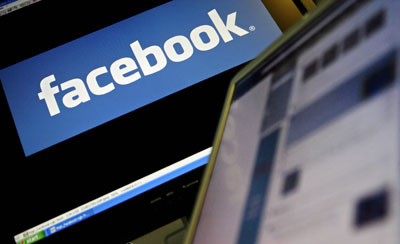
The ultimate cheat sheet for nonprofits
 You may be curious how Facebook Groups can complement the work you’re doing with your Page. Or, you may have a Group and want to move your fans over to your Facebook Page. Or, you mistakenly created a Facebook Profile for your organization and now realize that you should have started a Facebook Page.
You may be curious how Facebook Groups can complement the work you’re doing with your Page. Or, you may have a Group and want to move your fans over to your Facebook Page. Or, you mistakenly created a Facebook Profile for your organization and now realize that you should have started a Facebook Page.
If you’re confused by all the moving parts within Facebook, you’re not alone. Recently I presented a webinar for a small group of nonprofits and wasn’t surprised that the most popular slide was a cheat sheet on Facebook Pages and Groups.
Difference between Facebook Pages and Groups
The best way to think about the difference between Pages and Groups is to consider the users they serve.
Groups serve the needs of individuals just like you and me. Pages on the other hand, serve the needs of celebrities, businesses, brands and nonprofits. If you keep this basic framework in mind, Facebook will make a lot more sense.
What are Facebook Groups used for?
I’m no expert on the short history of Facebook, but I’m guessing that Groups arose out a need for individuals to organize around common interests. Facebook fulfilled this need with functionality that enabled users to organize and communicate quickly and easily.
- Represents a cause or idea – Without groups, organizing on Facebook would be impossible.
- No customization or apps – Connection is the prime point, not branding.
- Received as “message” – The same as if a friend sent you a message.
- Wall – Everyone like to share, be seen and comment on what others have shared.
- Users share many media types– And they like to share many different things.
- Some private, some public – Groups can be private (invite only, not publicly viewable to non-members), semi-private (invite only, publicly viewable to non-members), or public (anyone can join, anyone can view). Feel free to download this cheat sheet on Facebook Group settings.
If you ever wondered why Groups get to send messages directly into your Facebook Page inbox, but Pages have their updates sent into a secondary inbox, watch Why do Facebook Page updates and Group messages go into two different inboxes? on the Inbound Zombie Facebook Page (become a fan).
What are Facebook Pages used for?
Facebook Pages are intended for brands, businesses and nonprofits who want to reach users. Page functionality focuses on creating brand awareness, targeting specific types of users — 35 year-old men living in Boston who spend their money on sushi and live music, for example.
Some features unique to Pages include:
- Customized user experience – Pages allow administrators to build custom tabs using FBML and add widgets to create a unique experience for their fans. My Facebook Page displays two custom tabs.
- Target updates – Updates can be targeted by gender, location and age.
- Received as “updates” – As demonstrated in the video above, Page updates are received in a separate inbox.
- Wall – Same as Groups and Profiles, although admins can parse posts by fans into a separate stream.
- Fanbox and Facebook Badge – Enables admins to easily promote their page on their website or blog.
- Custom URL – If you have more than 25 fans.
Facebook Page and Group Cheat Sheet

Reposted from JohnHaydon.com.John Haydon delivers social web strategy solutions for “the quick, the smart, and the slightly manic.” Curious? Then visit the John Haydon blog, follow him on Twitter or leave a comment.
 This work is licensed under a Creative Commons Attribution-NonCommercial-ShareAlike 3.0 Unported.
This work is licensed under a Creative Commons Attribution-NonCommercial-ShareAlike 3.0 Unported.









Thank you!
What made you think about such a topic. Its funny I am not the only one that feels that way about it. Keep it up!. Just discovered this blog through Google, what a pleasant shock! :) ;) terrific.